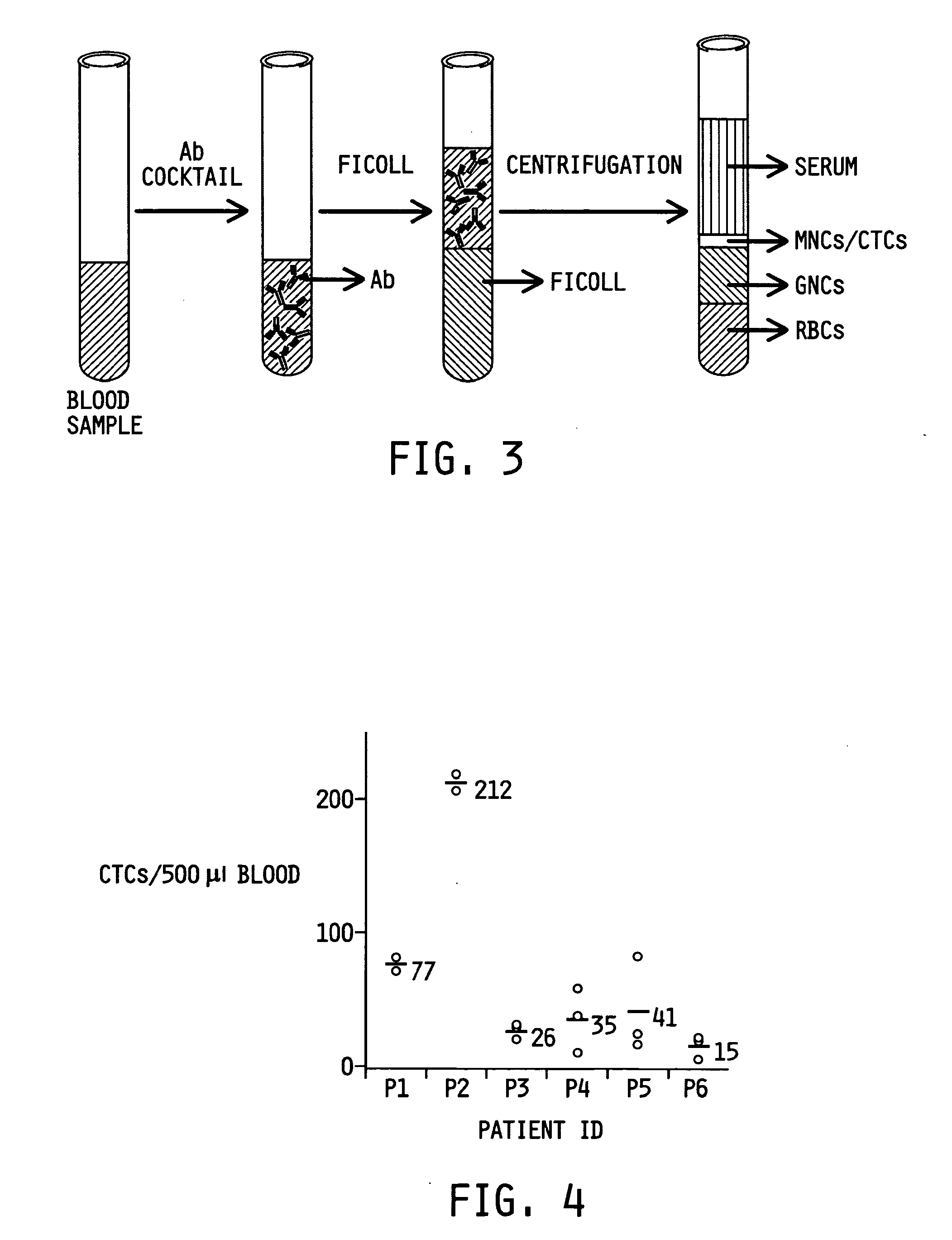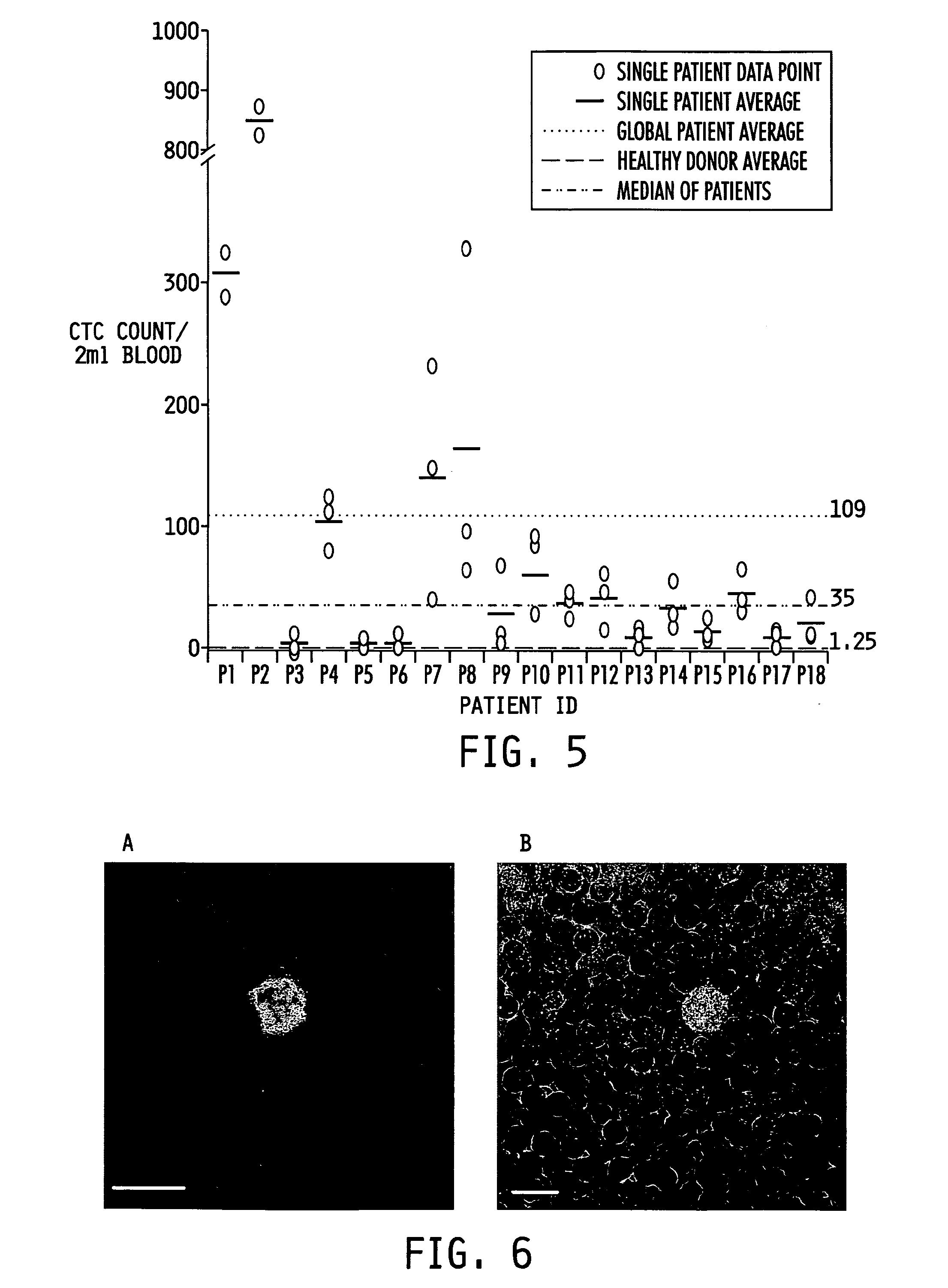Ex vivo flow cytometry method and device
a flow cytometry and flow cytometry technology, applied in the field of ex vivo flow cytometry methods and devices, can solve the problems of inability to meet the requisite sensitivity and biocompatibility of the available method, and many deficiencies of the conventional ex vivo technique, and achieve low background measurement and high specificity.
- Summary
- Abstract
- Description
- Claims
- Application Information
AI Technical Summary
Benefits of technology
Problems solved by technology
Method used
Image
Examples
example 1
Materials
[0069]Fmoc-Lys(Mtt)-Wang resin, Fmoc-Glu-OtBu, HOBT (1-hydroxybenzotriazole) and HBTU (2-(1H-benzotriazole-1-yl)-1,1,3,3-tetramethyluronium hexafluorophosphate) were purchased from Novabiochem (San Diego). Piperidine, DIPEA (diisopropylethylamine), Rhodamine B isothiocyanate (Rd-ITC) and triisopropyl saline (TIPS) were from Aldrich (Milwaukee). DiIC18 (3) and fluorescein isothiocyanate (FITC) were purchased from Molecular Probes (Invitrogen). The PD-10 column (Sephadex G-25M) was from Amersham. EC17 (folate-FITC), rabbit sera, and the folate-binding column were provided by Endocyte, Inc.
example 2
Cell Culture
[0070]Nasopharyngeal cancer cells (KB cells) were cultured in folate-deficient RPMI 1640 (Gibco) plus 10% fetal bovine serum (or calf serum) at pH 7 and incubated at 37° C.
example 3
Solid Phase Synthesis of Folate Conjugates
[0071]The precursor of folate, N10-TFA-Pteroic acid was synthesized according to standard procedures. Fmoc-Lys(Mtt)-Wang resin was soaked in DMF for 20 minutes with nitrogen bubbling before the reaction. 20% piperidine was added to cleave the Fmoc protective group. 2.5 e.q. Fmoc-Glu-OtBu, HOBT and HBTU, dissolved in DMF, as well as 4 e.q. DIPEA were added to the reaction funnel. After 2 hours of nitrogen bubbling at room temperature, the Fmoc cleavage step was repeated with 20% piperidine. 1.5 e.q. N″-TFA-Pteroic acid and 2.5 e.q. HOBT and HBTU, dissolved in 1:1 DMF / DMSO (dimethylformamide / dimethylsulfoxide), as well as 4 e.q. DIPEA were then added to the reaction for 4 hours with bubbling with nitrogen. The product was then washed with DMF, DCM (dichloromethane), methanol and isopropyl alcohol thoroughly and dried under nitrogen. 1% TFA / DCM (trifluoroacetic acid / dichloromethane) was used to cleave the Mtt (Mtt=4-methyl-trityl) group. 2.5 e....
PUM
| Property | Measurement | Unit |
|---|---|---|
| wavelength | aaaaa | aaaaa |
| wavelength | aaaaa | aaaaa |
| wavelength | aaaaa | aaaaa |
Abstract
Description
Claims
Application Information
 Login to View More
Login to View More - R&D
- Intellectual Property
- Life Sciences
- Materials
- Tech Scout
- Unparalleled Data Quality
- Higher Quality Content
- 60% Fewer Hallucinations
Browse by: Latest US Patents, China's latest patents, Technical Efficacy Thesaurus, Application Domain, Technology Topic, Popular Technical Reports.
© 2025 PatSnap. All rights reserved.Legal|Privacy policy|Modern Slavery Act Transparency Statement|Sitemap|About US| Contact US: help@patsnap.com



